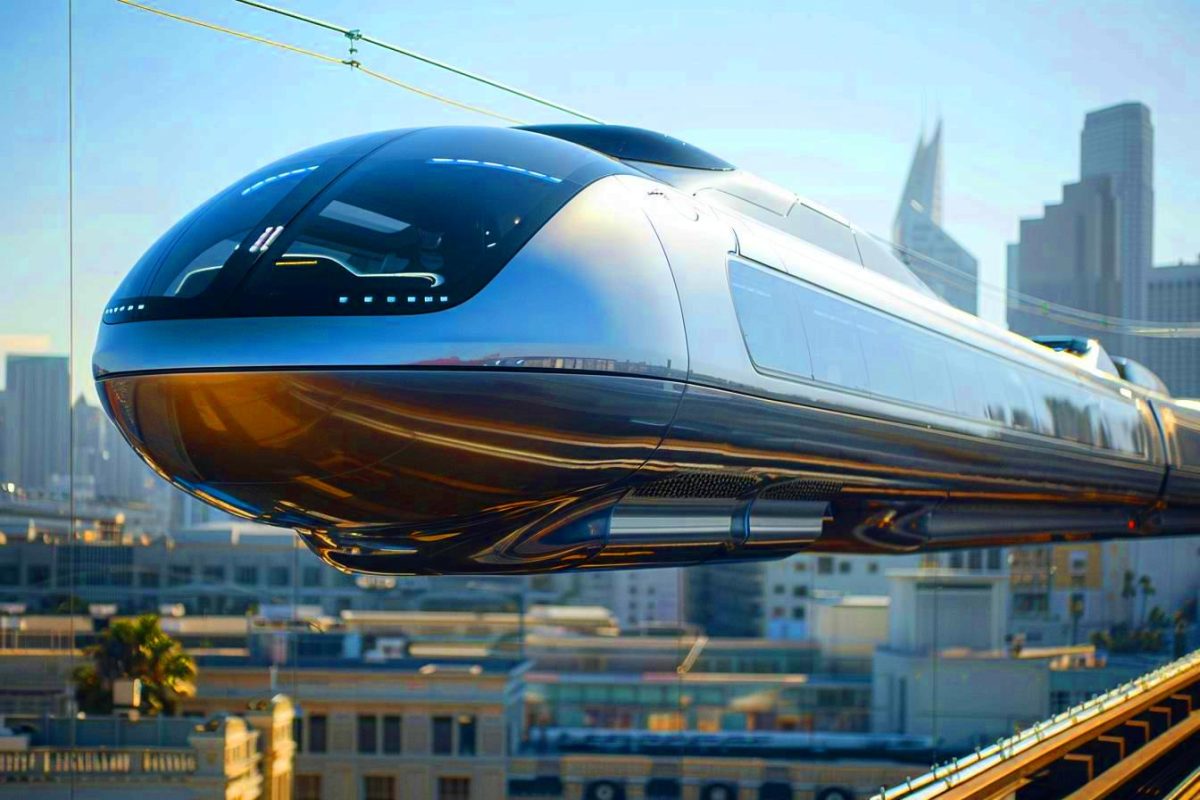The future of mobility is edging closer, and it is taking shape in China. In Shanxi province, engineers have begun testing a full-scale supersonic Hyperloop prototype, blending magnetic levitation with low-pressure tubes to slash drag and friction.
If the vision holds, this platform could challenge airliners on regional routes. The claim is bold: speeds on par with — and potentially exceeding — those of commercial jets.
H2: A technology never seen before
In Datong, a 2-kilometer experimental track now hosts China’s first real-scale maglev Hyperloop. The vehicle hovers via electromagnetic lift, removing wheel-rail contact and the losses that come with it.
Inside a reduced-pressure environment, air resistance falls dramatically. That combination is the key to pushing ground transport toward the realm of aviation.
Officials have not disclosed peak speeds. Yet engineers describe the early results as “encouraging,” strong enough to mark a pivotal step toward a next-generation rail system.
H2: Ambitious and strategic goals
The initiative is backed by the Shanxi government and China Aerospace Science and Industry Corporation (CASIC). For them, Hyperloop is more than a laboratory experiment; it is a strategic bet on national capability and exportable infrastructure.
A headline ambition is the Beijing–Shanghai corridor. The journey could compress to about 90 minutes, compared with today’s 4–5 hours on high-speed rail. That shift would redraw China’s economic geography.
The speed of construction at the Datong test center underscores the urgency. China sees technological leadership as a tool of soft power and domestic modernization.
H2: A quote from the frontier
“This is not just about speed; it’s about rewriting the map of economic gravity. When cities become 90 minutes apart, industries cluster differently, talent networks expand, and the definition of ‘daily commute’ changes.”
H2: Why this matters now
China’s mega-regions are growing fast. A high-capacity, low-friction network could move people and goods more efficiently across vast distances, strengthening national integration.
The promise is not only faster travel. Hyperloop could deliver lower lifecycle emissions than short-haul flights if powered by a clean grid, while freeing airport capacity for long-haul routes.
H2: The engineering realities
Building a reliable, high-throughput Hyperloop at scale is a daunting task. Maintaining vacuum integrity across hundreds of kilometers is nontrivial, and fault-tolerance must be engineered for every subsystem.
Safe operations at near-sonic speeds require extreme precision. That means robust sensors, control systems, and redundancy against power failures or pressure anomalies.
H2: Key hurdles to overcome
- Safety validation at speeds approaching 1,000 km/h inside a tube
- Continuous pressure management with rapid isolation of segments
- Evacuation and rescue protocols under constrained access
- Alignment tolerances, thermal expansion, and seismic resilience
- Cost discipline, from civil works to long-term maintainability
- Integration with existing stations, metros, and airports
- A compelling fare model that attracts broad ridership
H2: Economics, environment, and society
The capital cost will be immense. Proponents argue that a corridor carrying millions of passengers per year can amortize expenses, while unlocking productivity gains across multiple cities.
Environmental impact must be measured honestly. Tube construction, land acquisition, and materials have footprints that need mitigation. Over the long run, clean power and efficient operations could make Hyperloop a greener alternative to jets.
Socially, ultrafast links can rebalance opportunities. But they can also accelerate housing pressures and uneven development. Policy design will be as critical as engineering.
H2: China’s live laboratory
China has the scale, centralized coordination, and manufacturing capacity to prototype rapidly. That can compress the iteration cycle and move from proof-of-concept to corridor trials faster than elsewhere.
If the technical and economic limits are overcome, the nation could set a benchmark for future mobility. If not, the lessons will still shape high-speed transport and maglev systems for years.
H2: What comes next
Expect incremental milestones rather than instant breakthroughs. Longer test tracks, higher speeds, and progressive certification steps will signal maturity.
International collaboration may follow, from standards to safety frameworks. Interoperability will matter if Hyperloop networks ever cross borders.
For now, one reality is clear. The race to reinvent medium-range travel has begun, and China has placed a powerful marker. The question is no longer whether the technology is captivating — it is whether it can be made scalable, safe, and profitable at the speed of history.
